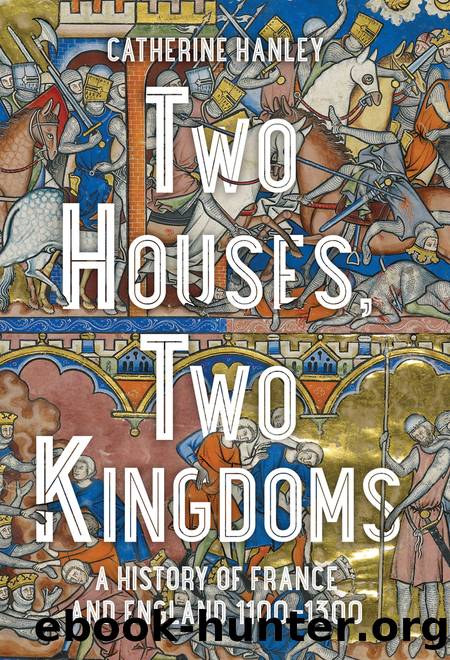Two Houses, Two Kingdoms by Catherine Hanley;

Author:Catherine Hanley;
Language: eng
Format: epub
ISBN: 9780300268669
Publisher: Yale University Press
CHAPTER NINETEEN
LOUIS REX
T
HE WAR IN ENGLAND WAS over; now the task was to ensure peace and to restore and maintain systems of governance, law and administration. This was complicated by the fact that the realm would be subject to the first royal minority since the Conquest, a minority that would be of some length, given the new kingâs tender age, so new and different ways of working would need to be found.
To start with, new ways were not terribly apparent; it seemed almost as if Johnâs reign were continuing, for the men in charge were those who had served him for years. But things soon took a different turn once the prominent nobles â both those on the council and others â realised that for the foreseeable future they would be able to function without the direct and overbearing oversight of a powerful but unstable adult king. Self-interest became the order of the day.1 England was ruled by an uneasy coalition of William Marshal as regent, Peter des Roches as the kingâs guardian and the legate Guala as the popeâs representative. Hubert de Burgh remained the justiciar, but his role had effectively been downgraded: normally the justiciar was the kingâs right-hand man and his representative while he was away; but as the present king was already represented by a regent, Hubertâs exact position was unclear.
It was not long before changes took place both in the council and in the wider realm. A group of nobles, many of whom had been on opposing sides during the recent war, put aside their differences and departed in 1218 on the campaign that would later be known as the Fifth Crusade. Among them were Ranulf de Blundeville, earl of Chester; William dâAubigny, earl of Arundel; Saer de Quincy, earl of Winchester; and Robert Fitzwalter. They joined up with contingents from France, Hungary and the Holy Roman Empire in a force led by Andrew II of Hungary and Leopold VI, duke of Austria (the son of Leopold V, who had been Richard the Lionheartâs antagonist and captor two decades previously). Together with the king of Jerusalem, John of Brienne â a French nobleman who had married Queen Maria of Montferrat, the Jerusalemite royal house having continued its long tradition of producing female heirs â they besieged and took the port city of Damietta in Egypt. However, they were later defeated as they marched south along the Nile, and were forced to restore Damietta as part of the negotiated settlement.2 Robert and Ranulf would eventually return from the expedition; Saer died at Damietta and William on his way home.
Meanwhile, in England, the original ruling triumvirate had dissolved. Guala retired as papal legate to England in the autumn of 1218, to be replaced by Pandulf Verraccio, who had previously spent time in England (he was involved in the Magna Carta negotiations) but who had been in Rome during the intervening three years.3 It was also in the autumn of 1218 that the aged William Marshal began to suffer from poor health; he died in May 1219.
Download
This site does not store any files on its server. We only index and link to content provided by other sites. Please contact the content providers to delete copyright contents if any and email us, we'll remove relevant links or contents immediately.
| General | Channel Islands |
| England | Northern Ireland |
| Scotland | Wales |
Room 212 by Kate Stewart(4766)
The Crown by Robert Lacey(4584)
Endurance: Shackleton's Incredible Voyage by Alfred Lansing(4528)
The Iron Duke by The Iron Duke(4135)
The Rape of Nanking by Iris Chang(4032)
Killing England by Bill O'Reilly(3901)
Joan of Arc by Mary Gordon(3808)
Say Nothing by Patrick Radden Keefe(3738)
I'll Give You the Sun by Jandy Nelson(3277)
Shadow of Night by Deborah Harkness(3189)
Hitler's Monsters by Eric Kurlander(3179)
Mary, Queen of Scots, and the Murder of Lord Darnley by Alison Weir(3086)
Blood and Sand by Alex Von Tunzelmann(3068)
Darkest Hour by Anthony McCarten(3020)
Margaret Thatcher: The Autobiography by Thatcher Margaret(2976)
Eleanor & Park by Rainbow Rowell(2951)
Red Famine: Stalin's War on Ukraine by Anne Applebaum(2818)
Book of Life by Deborah Harkness(2735)
The One Memory of Flora Banks by Emily Barr(2695)
